The Hero's Way Read online
Page 3
Garibaldi kept it brief. ‘The fortune that has abandoned us today will smile on us tomorrow. I am going out from Rome. Anyone wishing to fight on against the foreigner should come with me. I offer neither pay, nor quarters, nor food; I offer hunger, thirst, forced marches and all the perils of war. Let him who loves his country in his heart and not just with his lips, follow me.’
A hundred and seventy years late for the appointment, Eleonora and I are doing just that: following. Do we love the country? In our hearts? I’ve been here forty years, yet remain residually English. Eleonora is from Taranto, Puglia, a part of Italy many feel gained nothing from unification. On the other hand, I’ve never had any desire to go back to England, and she’s never felt tempted to join the tens of thousands of young Italians who have left the country in this last decade of economic decline. So I think we do love it, yes.
Certainly we love the Blu Bar, which appears towards 7 a.m. in the suburban wasteland just before the Grande Raccordo Anulare, the great circular road that marks the end of the city. Garibaldi’s men walked non-stop through the night. We’ve been going two and a half hours and are hungry and thirsty and discouraged by heavy traffic, gritty streets and piles of uncollected rubbish.
But we can’t complain. The burly proprietor of the Blu Bar swiftly produces two tall glasses of freshly squeezed orange juice, creamy cappuccinos and plump croissants. Bringing them outside on a tray, he lays them before us on a white plastic tabletop with the air of a butler serving a lord. His other clients are all van drivers and factory workers, in a hurry to start the day. No one else is sitting down. Yet he seems pleased to take the time to squeeze our oranges and bring our tray to the table. At no extra cost. Only when he sees our shiny new backpacks and the map we’ve spread on the table does he allow himself a quizzical smile. What in God’s name are two hikers doing in a place like this?
It’s a fair question. The fact is that though we know where Garibaldi went, we don’t know how he got there. Two of his officers, Egidio Ruggeri and Gustav von Hoffstetter, kept diaries of the march and published accounts in the 1850s. In 1899 the patriot Raffaele Belluzzi collated their versions with details gleaned from letters, unpublished manuscripts and interviews with surviving witnesses. In 1907 George Macaulay Trevelyan added information from other correspondents in his book Garibaldi’s Defence of the Roman Republic. But there’s no agreement on the route the men took, particularly in the first two days, and this is very likely because Garibaldi’s main concern was to fool everyone as to where he was going.
The French had penetrated Rome from the west, the side nearest the sea. Leaving from Porta San Giovanni, Garibaldi gave the impression he was heading south, yet the following morning his men would be settling down outside the hilltop town of Tivoli, twenty miles due east. No one is sure where they changed direction. Ruggeri says they quickly circled through the town to the Via Tiburtina, which runs straight out to Tivoli. Belluzzi believes they marched south-east to the Alban Hills and the small town of Zagarolo, fourteen miles south of Tivoli, and only then turned north. Trevelyan agrees, since this is the only way, he claims, they could have fooled the French. But that would mean, I calculate, a march of thirty-two miles, and Hoffstetter, who had professional military training, observes that ‘while a good walker can keep up a speed of three miles an hour, a marching column of soldiers, whether by night or in the torrid heat of the day, with the dreadful dust of the road, in general won’t do more than two miles an hour’. On this occasion they marched for ten hours. So twenty miles at most.
I have spent months thinking about this. One day it dawns on me that Hoffstetter’s miles might not be my miles. Sure enough, I discover there is, or was, an Italian mile which amounts to 1852 metres or 2025 yards. That means Hoffstetter’s two miles an hour would actually be 4050/1760 yards = 2.3 English miles, so that ten hours walking (non-stop!) becomes 23 miles. But that still isn’t 32 miles.
Why am I so taken by this idea of walking exactly the route they took? Isn’t this a form of constriction, the opposite of the freedom Garibaldi stood for? The more you look at a book of history, the more you realize how many gaps there are, how much is being glossed over. Narrative in general is a gloss, as every novelist knows. For example, historians agree that the garibaldini left Rome around nine in the evening and arrived in Tivoli at seven the following morning, but since in the nineteenth century people didn’t move clocks forward in summer time, wouldn’t that have been ten in the evening and eight in the morning our time? Then none of the books I have read on the Roman Republic mentions the size of Rome’s population at the time, which I finally discovered was a mere 170,000 in 1848, as compared to today’s 2,900,000. So the garibaldini would have been out of town in a matter of minutes, whereas we’re still walking through a suburban haze of carbon monoxide after two and a half hours.
You can’t reconstruct the past. We would like to walk to Tivoli through Zagarolo, but we know we’d never manage thirty-two miles on our first day in a temperature of thirty-seven degrees. We’ve done some training in recent weeks, mainly in the flat country south of Milan, but we’ve never walked more than twenty miles. After much fussing, we decide that since our sources disagree, we’re free to take any route that makes sense. For example, the Via Tiburtina, the shortest. At least we know the Tiburtina was already there the night of 2 July 1849. It’s been there since 286 BC.
But does this route make sense? No one leaves Rome on foot these days, that’s the truth. There are no footpaths and only short stretches of cycle track. Once out of the centre, there are no pavements. As well as our paper maps, we’ve invested in the ‘professional’ version of a path-finding app that seeks out every possible pedestrian route. But sitting in the Blu Bar just a hundred yards from the sign that has ROMA with a red slash through it, our app can’t find anything pedestrian-friendly.
Packs on our backs again, the capital’s rush hour is upon us. In the underpass beneath the Grande Raccordo there’s barely space to walk between a faded white line and the wall. Headlights rush towards you. Trucks rumble. It’s frightening and certainly far more dangerous than marching through the countryside 170 years ago. Then comes a tangle of slipways and connecting arteries as we work our way north towards the Tiburtina. We move circumspectly, pressed against crash barriers. By eight, the sun is warm. We’re behind schedule. Brambles stretch out from behind the crash barriers to pluck at arms and ankles. We’re walking on detritus: broken glass, road kill, syringes and plastic; plastic in every shape and form.
On the approach to an autostrada overpass we meet some walkers coming the other way, the first and last we’ll see all day. They’re Gypsies, another group of people Minister Salvini loves to hate. Enviably relaxed, they advance in single file, the women in their long dresses and headscarves, the men heavily moustached. Passing by, they salute us with wry smiles, but the last in the line, a young boy stops. ‘You be careful,’ he says. ‘It’s dangerous here.’
To walk, it seems, is to shed your class, to strike new alliances.
As if determined to prove its worth, our app begins to suggest off-road alternatives, through the scrub of an autostrada embankment for example, or along the fence by a railway line. For almost half a mile we force our way between barbed wire and prickly shrubs. I begin to wonder when Eleonora will rebel. She’ll tell me the whole project is crazy and we’ll give up before lunch.
Finally, we arrive at the Tiburtina where it crosses a small place called Setteville. Not seven villas, as the name would suggest, but rows of ten-storey red-brick blocks over a ribbon of pizzerias, hardware stores and low-cost supermarkets. We follow the Tiburtina to the end of the high street and realize it’s hopeless. The 2000-year-old route is now a thin strip of tarmac thundering with heavy commercial traffic.
As we stand there staring, a passing driver honks at Eleonora and waves his hand out of the window in an unequivocal gesture. The third in an hour.
Is this the moment to take a bus? Eleonora has quickly est
ablished herself as the expert with the app. She coaxes it into proposing a detour: a cycle track to the north followed by a maze of minor roads. It adds four miles to the hike. We’ve been walking five hours. We drink some water, spread more sun cream on arms and legs, then, finally, the circumstances offer a little fun.
The road we’re walking down is called Via G. Leopardi. It’s a tic the Italians have, to put celebrated names on road signs in exactly the way names are written in school registers or legal documents. Via D. Alighieri. Viale M. Buonarotti. High culture and bureaucracy. It always makes us laugh. I have a photo of Eleonora standing by G. Leopardi – our favourite poet – among weeds and broken asphalt, sun powering down on her hat, and she’s smiling broadly, utterly confident of our success. A real garibaldina. Anita, Ruggeri writes of Garibaldi’s wife, always tried to cheer the men up, however bad things got. ‘Better times will come,’ she would tell them.
But not yet. When we get to the cycle track, it’s enclosed between the crash barrier of another busy road and a tall fence; we have traffic racing to our left and scorched fields of harvested corn to our right. The fields are beautiful to look at but inaccessible. At no point in an hour and more’s walking is there any sign of a track or footpath or any break in the fence. We pass just one cyclist, so amazed to see us he stops to talk and tells us that he carries a pair of secateurs with him in case of brambles.
Here’s an irony then. We are walking through the political reality that so many patriots in the 1800s yearned for, a free united Italy. We’ll have no borders to cross in our long hike through the country. We won’t have to show our papers to foreign soldiers or pay duties at customs posts. Yet the freedom to walk, or to walk safely, is gone. At least on the outskirts of Rome. And our first attempt to get close to the experience of the garibaldini has actually taken us away from them. Plunging my forearms in cold water in the bathroom of a petrol station, I realize I haven’t thought of their march for an hour or more.
Tivoli, Hoffstetter writes, is ‘surrounded by woods’ and ‘delightful waterfalls’. ‘The sacred groves of ancient times,’ he adds. He was an educated man. At 7 a.m., alerted in the early hours by an advance party of cavalry, the good citizens came out of the town to greet the tired soldiers as they approached, bringing bread, meat and wine in abundance. I imagine horses galloping through the night, clattering on cobbles at the city gates, soldiers banging on doors to wake people up. Again, when you start to picture things, you realize how much has been glossed over. Were the people of Tivoli really happy to be woken and asked to rustle up a meal for getting on for 5000 men? Hoffstetter insists they were. In any event, campfires were lit and soon the men were cooking and eating. Then they slept in the shade of a wood below the city walls while Garibaldi and his staff set about organizing the infantry into two legions of 1800 men, each legion then being divided into three cohorts and each cohort into six centuries. Officers were allotted, groups merged and divided. The problem was that, aside from his own soldiers in the First Legion, Garibaldi had little idea who had chosen to come with him or what he could expect of them. Counting them in the early morning beneath the walls of Tivoli, it became clear there had already been scores of desertions. Many had sneaked off in the dark.
How I sympathize! With the sun at its zenith, we are still zigzagging across the torrid plain in the early afternoon, past sand pits and stone quarries, over rivers reduced to trickles, taking occasional refuge under a fig tree. The landscape is distinctive here. Moving east out of Rome the flat land ahead of you ends in a solid north–south line of dark green hills. To your right is a scorched expanse of grassland and suburban sprawl. But to the left, the north, three burned brown hills rise abruptly from the plain. Each with a town on top. Monterotondo, Mentana, Montecelio. At a distance, there’s something shabbily exotic about them. Not picturesque but grittily real, in a very foreign way. And they preside, somehow, these conical hills, over our long walk, as if we will never quite get beyond them, until at last we hit the steep slope up to Tivoli.
Closing the day’s walk with a sharp climb will be a constant in the coming weeks. The towns of central Italy are mostly atop hills. Garibaldi sought them out for their defensive potential. A fast stream rushes down the approach we’ve taken. It’s channelled in a conduit against a stone wall, lively, bubbling water that invites you to take your shoes off and dip your burning feet into its freshness. Except there’s no shade to stop in. And the sun is frightening now. We’re in difficulty. I’m feeling quite dazed and strangely detached when finally we pass through the city gate into the relative cool of Tivoli’s narrow streets, panting for breath, heart racing from the climb. But strangely elated too. And even more so when we discover he is there to greet us. Yes, a small be-hatted bust, no doubt long removed from some more prominent position, has been hidden away behind railings among children’s swings and slides in the public gardens. Uncannily, we spy it at once – Garibaldi! – and at once the flowing hair, deep-set eyes and thick beard conjure up that mood of stern serenity you find in so many statues of the hero. Across the road, on the wall of a deconsecrated church, a plaque reads:
Terror of his Enemies,
Admiration of the People,
Garibaldi rested here with his brave men,
3 July 1849.
We rested too. We found our B & B, gave up trying to explain to the logorrheic landlady that we had walked from Rome – too bizarre an idea for her to cope with – and listened patiently to interminable instructions for parking a hypothetical car. I wondered how she could not see the pitiful state we were in, clothes sodden with sweat, skin grimed and scratched.
‘Since we’re walking again tomorrow,’ Eleonora interrupted an equally interminable explanation of breakfast procedures, ‘we’ll be leaving around 5 a.m., so we won’t be here to eat.’
The good lady struggled with this.
‘Perhaps you could leave something on a tray,’ Eleonora proposed.
Later, under an icy shower, examining sore toes and sunburn, we learned what the history books do not tell you, that the first duty of the soldier is to look after his body for the battle to come. Or her body. I needed to lance a blister; Eleonora had sores on her collarbones where the straps of her pack rubbed. ‘Coraggio,’ she announced. ‘We knew this would be the toughest day.’
Tivoli
Dump the carts and switch to mules. This was Garibaldi’s decision, Hoffstetter tells us, while mulling things over in Tivoli. Only as the days went by would I realize how profoundly that choice would shape our summer.
But who was Gustav von Hoffstetter? It’s hardly an Italian name. We need to get to know the people we’ll be travelling with.
Born in 1818 in Bavaria (thirty-one, then, at the time of our expedition), Hoffstetter had attended the military academy in Munich, served in the Swiss army in 1847 and seen action on the winning side in the Swiss civil war of that year. In 1848 he had thrown his professional career to the wind, taking the side of liberal revolutionaries in southern Germany. The liberals were crushed and Gustav forced to flee, first back to Switzerland, then Italy.
Once in Rome, he offered his military expertise to the republican cause and spent May and June as assistant to Luciano Manara. When Garibaldi asked Manara to become his aide-de-camp, Hoffstetter was part of the package, and when Manara was killed on 30 June during the last battle of the siege, Garibaldi asked Hoffstetter to replace him.
Why? The German brought traditional military know-how and organizational skills into the volunteer mix. He was reliable. He knew how to secure a camp, how to seal off a town, how to use cavalry to cover the flanks of a marching column. He never forgot the men’s need for food and water and somewhere to sleep. He was always thinking ahead, sharing his ideas, making proposals. Garibaldi would listen to him, then do something quite different. But not always. And when the General did what he proposed, Gustav was thrilled.
But this wasn’t just a military mind. Hoffstetter was a romantic too, ready to go into rap
tures over a fine landscape or gloomy ruin. Here he is on arrival in Rome.
The object of my first outing was the Capitoline Hill. What a change to be suddenly transported from the hubbub of military assemblies and the variety of 19th century city clothes to the ruins and few remaining columns of this venerable shrine of a great people! Even in their decay, those ruins are proud, magnificent. In the calm, quiet evening, I felt as though the old ghosts of Rome were walking among the fallen stones in their togas, excited to hear that their oppressed descendants had finally taken up arms and rebelled.
Again and again along our walk, as Eleonora and I look back at the garibaldini who went before us, we will find that they were looking back at others. And those others perhaps looked back at others again. We each have our day and measure ourselves against a past as alluring as it is elusive.
Hoffstetter’s romanticism, however, didn’t ignore modern Rome and in particular the city’s women. ‘Come evening,’ he tells us, ‘the streets fill with people, and I would stroll up and down the corso admiring the noble faces and splendid shapes of the Roman women.’ It wouldn’t have been proper of him to tell us how much he got to know those women, but here’s a diary entry from the early days of the siege.
Today two girls turned up, eager to join the Legion (already 5 or 6 have enrolled and distinguished themselves for their courage in battle). One, Carolina, was very shapely, but they were both too delicate to handle a rifle; so we proposed they help with catering at Headquarters. We had them dressed up in fine fashion, officially enrolled and given a salary, their main job being to prepare a good black coffee every morning and make sure there was a constant supply of cigars. For a while all went well, but then Carolina, who had seemed so submissive, turned out to be quite dangerous. Manara fired both of them, not wanting to set a bad example at headquarters.

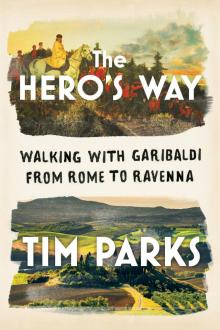 The Hero's Way
The Hero's Way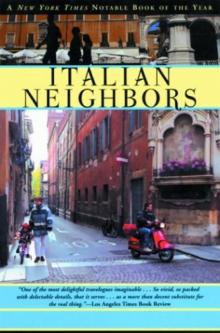 Italian Neighbors
Italian Neighbors Goodness
Goodness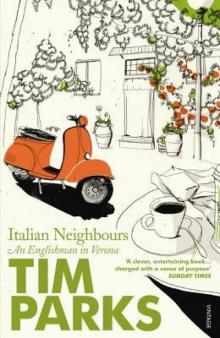 Italian Neighbours_An Englishman in Verona
Italian Neighbours_An Englishman in Verona Italian Neighbours
Italian Neighbours Juggling the Stars
Juggling the Stars Cara Massimina
Cara Massimina Cleaver
Cleaver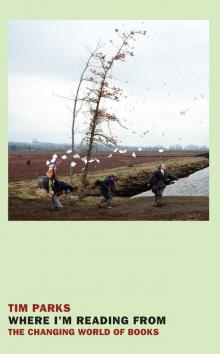 Where I'm Reading From
Where I'm Reading From Dreams of Rivers and Seas
Dreams of Rivers and Seas The Fighter
The Fighter In Extremis
In Extremis Painting Death
Painting Death Europa
Europa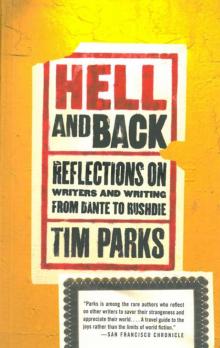 Hell and Back
Hell and Back Judge Savage
Judge Savage Thomas and Mary
Thomas and Mary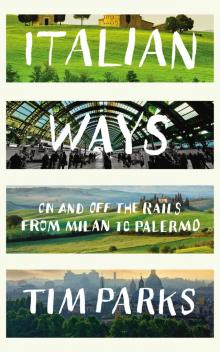 Italian Ways
Italian Ways Rapids
Rapids Mimi's Ghost
Mimi's Ghost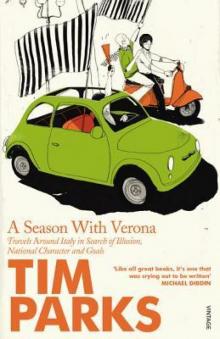 A Season With Verona
A Season With Verona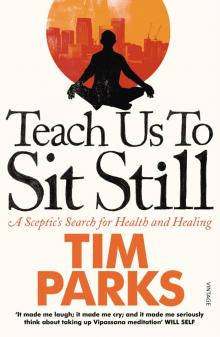 Teach Us to Sit Still
Teach Us to Sit Still The Fighter_Literary Essays
The Fighter_Literary Essays Medici Money
Medici Money